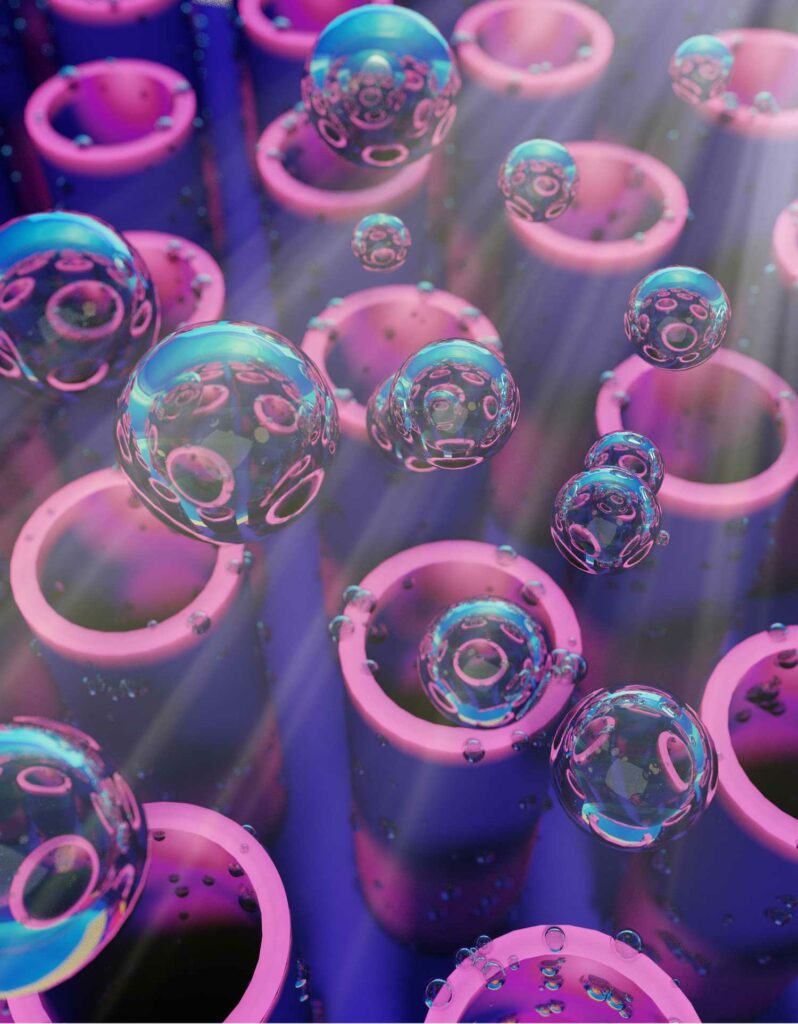Solar nanofurnace can remove toxic gases, generate steam and produce nanomaterials
An international team of scientists, led by researchers from the Czech Advanced Technology and Research Institute (CATRIN), Palacký University Olomouc, has developed, in collaboration with American, German and Italian colleagues, ultra-small and highly efficient solar furnaces used for removing toxic gases, desalination, or as steam generators and chemical reactors for the production of nanomaterials. These nanofurnaces feature a size of several tens of nanometres in diameter and can be made in the form of thin films or panels transforming the solar energy into heat, thus reaching temperatures of up to 600 degrees Celsius. The results of the unique technology, which the author team protects with an international patent application, were published in Nano Letters and Nano Energy.
Researchers used the ability of some metallic nanoparticles to generate large amounts of thermal energy after being irradiated with light of a suitable wavelength. The pioneer work in the field of so-called thermoplasmonics dates back only to the beginning of this millennium and is mainly related to the use of specific optical properties of gold nanoparticles and their testing in biomedicine, particularly in photothermal cancer therapy. “The essence of our technology is titanium nitride nanotubes, which have similar thermoplasmonic properties to gold nanoparticles, but are approximately forty times cheaper. In addition, they show great temperature stability and have a cylindrical shape suitable for use as nanofurnaces or chemical reactors. The developed technology enables rapid conversion to industrial scale and production of films or panels seeded with billions of densely arranged nanofurnaces,” said the project’s main author Alberto Naldoni from CATRIN, who is also an ERC-CZ grantee.
Low production costs as well as technological requirements, high efficiency and temperature
Inside the nanofurnace, the team of scientists from Olomouc was able to experimentally demonstrate a temperature of up to 600 degrees Celsius. These results confirmed the relatively low losses in converting solar energy into thermal energy, as evidenced by theoretical simulations by co-authors from Purdue University in the US and the Polytechnic University of Milan, Italy. “Compared to commercial systems for light-to-heat conversion, such as solar towers, our approach allows reaching extremely high temperatures for utilizing solar radiation under favourable conditions, which is an important technological and economic aspect. Moreover, existing commercial technologies require one to two orders of magnitude higher radiation energy. These are the main reasons why we decided to patent the technology,” added Štěpán Kment, Head of the Photoelectrochemistry group at CATRIN, who is also active at the Technical University of Ostrava (VŠB-TUO).

Applications in green energy, ecology and chemistry
Thanks to high solar energy conversion efficiency (68%), low production costs as well as energy demands, solar nanofurnaces may be used in the area of renewable electricity and advanced solar energy materials. However, Czech researchers are also studying other applications. “It’s relatively easy to place catalysts on the inner walls of nanofurnaces—a kind of chemical reaction accelerator. For example, we have demonstrated the high efficiency of solar thermal conversion of toxic carbon monoxide deploying rhodium nanoparticles. Moreover, nanofurnaces can serve as a unique chemical nanoreactor, where solar-induced chemical reactions can be performed with unique temperature distribution and control, thus enabling to prepare completely new materials,” evaluates the application potential of solar nanofurnaces Radek Zbořil from CATRIN and the VŠB-TUO. In a recent paper in the journal Nano Energy, the author team also demonstrated the extraordinary efficiency of nanofurnaces as solar steam generators. “This allows testing the developed nanosystems in desalination technologies, for example. The high efficiency and evaporation rate in such a solar reactor, combined with the subsequent steam condensation, can be also used in low-cost technologies for water remediation and for the removal of dissolved toxic substances. It may open the door to removing a greater variety of pollutants,” concluded the first author of the paper Luca Mascaretti from CATRIN. In addition to scientists from CATRIN and VŠB-TUO, researchers from Purdue University and Rice University in the US; universities in Trieste and Milan, Italy; and the University of Erlangen-Nuremberg, Germany, participated in this multi-year project.
L. Mascaretti, A. Schirato, R. Zbořil, Š. Kment, P. Schmuki, A. Alabastri and A. Naldoni, Solar steam generation on scalable ultrathin thermoplasmonic TiN nanocavity arrays, NANO ENERGY, vol. 83, pp. 105828, 2021.
A. Naldoni, Z. A. Kudyshev, L. Mascaretti, S. P. Sarmah, S. Rej, J. P. Froning, O. Tomanec, J. E. Yoo, D. Wang, S. Kment, T. Montini, P. Fornasiero, V. M. Shalaev, P. Schmuki, A. Boltasseva and R. Zbořil, Solar Thermoplasmonic Nanofurnace for High-Temperature Heterogeneous Catalysis, NANO LETTERS, vol. 20, pp. 3663–3672, 2020.


